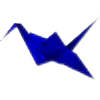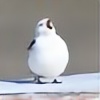HOME | DD
 origamist — Book of Names
origamist — Book of Names

Published: 2011-05-21 16:40:31 +0000 UTC; Views: 3386; Favourites: 44; Downloads: 695
Redirect to original
Description
Here is a table which will show you how to write the names of most of Tolkien's characters and places using his alphabets. This table is intended to show you how to copy the character's names by hand; if you want to use one of the digital tengwar fonts that you can find online, see this version.DeviantArt may be showing you a .png preview, which only has four characters listed. It may also be showing you the full PDF, which is a bit hard to read. Hit the "Download File" button to get the PDF in legible form. It has something like a thousand characters listed.
This is intended as a resource for anyone wanting to decorate their own pictures with tengwar; it doesn't have a lot of artistic merit on its own. I wrote this after I saw one too many picture of an Elf with a spectacularly misspelled tengwar caption. If you're at all unsure how to spell someone's name, look it up here.
If you use one of the transcriptions from this, leave me a comment.





Critique is requested in the following areas:
- Suggested mode. Since Elrond is originally from Beleriand and has a Sindarin name, it's probably best to spell his name in the mode of Beleriand. So the Beleriandic spelling is colored black. Sometimes it was hard to figure out if the more obscure names were supposed to be Westron or Sindarin (or if a character with a Sindarin name would spell it in Westron anyway). If you disagree with my choice, please tell me.
- Transcription errors. I have a pretty good mostly-automated process for transcribing these, but it's not perfect (especially for English names). If you think a tengwar or angerthas transcription is in error, please let me know. (Also, if I seem to be indicating that "Elros" is one of Elrond's nicknames, please point it out.)
- Additional characters. The time-consuming part of this is finding the names and figuring out recommended modes. I'm happy to add any Tolkien character or place you want; just leave a comment telling me who they are.
Related content
Comments: 14

As long as I learn Sindarin, I never met the Arnor writing mod before. Where did you find it, and where can I find more about it?
👍: 0 ⏩: 0

This is amazing! Thank you. I'm still chuckling about that Saruman pun...
👍: 0 ⏩: 0

Nice one.
One question: I see 'Feanor' (yes, accent, I know, but I'm lazy) typeset (in the Sindar/tehtar mode) with the E tehta over the short vowel carrier. I use mostly a phonetic mode in which I would write it over the long carrier, it being a long E sound (or, possibly, a long A, in which case it should use the A tehta). So is this mode more spelling-based than mine, or am I pronouncing 'Feanor' wrong, or what? I ask because mostly your tehtar transcriptions match mine just about perfectly, so I'm curious about the discrepancy here.
👍: 0 ⏩: 1

"ë" (e+two dots) is a dieresis. All it means is that the "e" is a separate syllable on its own. It's not "Fay-nor"; it's "Feh-ah-nor". Three syllables, not two.
Long vowels are consistently marked with either an acute accent "é" or a circumflex "ê". A dieresis does not mean a long vowel, and Tolkien never used two vowels to mean a long vowel. (What they do mean is spelled out in Appendix E.)
Long vowels do not occur any more in English. My primary school teacher told me that the vowel in "bite" is a long "i". In the Middle Ages, "bite" was pronounced like a longer version of "bit": "biiit". We now pronounce "bite" with a dipthong, not a long vowel. The sound in "bite" is a combination of the vowel sounds in "bat" and "beet". (Say "ah-ee" very fast several times; you should see what I'm getting at.)
A long vowel, as Tolkien describes them, is exactly that: the corresponding short vowel held for a long time. So "Luthien" would be pronounced "Loothien", and "Lúthien" is pronounced "Looooothien". (Not quite that exaggerated, but you get the idea.)
In an English phonemic tehta mode, I think you're supposed to specify some tengwa (letter) for "following ee sound" and "following oo sound". Let's use yanta and úre. You then spell "bat bet bit bought but" as "w1E w1R w1T w1Y w1U" (in the Dan Smith encoding) and "bait beet bite boat boot boy bow" as "wlF1 w1Ö wlD1 w.H1 w1é wlH w.D". You have to make up two extra tehtar for the sounds in "beet" and "boot": they are honest vowels and need their own symbols.
👍: 0 ⏩: 0

This is a brilliant resource! The books about the languages are great, but you have to have access to them. An online source has been wanting.
You've put a lot of work into it. I can only imagine how lomg it must have taken... O.o
👍: 0 ⏩: 0

Impressive. I know too little of Tolkien's languages to fully understand some things, like why there's such a big difference between Gondor and Arnor Sindarin, or what Tehta means in the westron section, etc. I've been wanting to do some serious study of Tolkien's languages, but it's not like I can take a course at a local university or sometning, so I'm having trouble finding good resources to learn from.
👍: 0 ⏩: 1

There are two ways to write vowels in tengwar--with accent marks (tehtar, the thingies in red in Earendil's Quenya names) and with proper letters. There are several different ways of assigning meaning to letters and accents (tengwar and tehtar); these are called modes. A tehta mode uses accent marks for vowels; a full mode uses letters for vowels. The main difference between Arnor and Gondor is that the Arnorians use a full mode and the Gondorians use a tehta mode.
To learn more about tengwar, start with the the Mellonath Daeron tengwar primers . Other bits of that web site can probably tell you other places to look. (If your local library has a copy of The Road Goes Ever On, check it out--it has two beautiful long inscriptions that provide lovely examples of two modes of tengwar.)
👍: 0 ⏩: 0

This is awesome! It's great peoples are willing to take the time to do this so well, with all the different languages! Congratulation, really!
You can add anyone? I'd like to see "Faramir". His name is from Quenya - "Fáramírë" "jewel of the seashore" (but his brother's is from Sindarin, it's a trap ^^). However the language spoken in Gondor is Sindarin or Westron, so I'm not sure which language is more appropriate... (I'm no help I know)
👍: 0 ⏩: 1

I've been assuming that if someone has a Quenya variant of their name, it should be put in Quenya mode--so we'd have "Faramir" blackened in the English/Westron column, and "Fáramírë" in the row below it blackened in the Quenya column--this is sort of like Earendil, above, being blackened in the Quenya column even though he's from Beleriand. I can add "Fáramírë" when I get home--"Faramir" is already there.
👍: 0 ⏩: 1

This is really amazing! The amount of work this took is just beyond belief, but it is very well appreciated! Thank you!
👍: 0 ⏩: 0

Wow, you did a great and hard work here!!!
It's awesome, I've read the PDF file and I'm still amazed about how complex are the languages Tolkien created.
I'm sure I will use this in the future, thanks so much for sharing it!
👍: 0 ⏩: 0




















